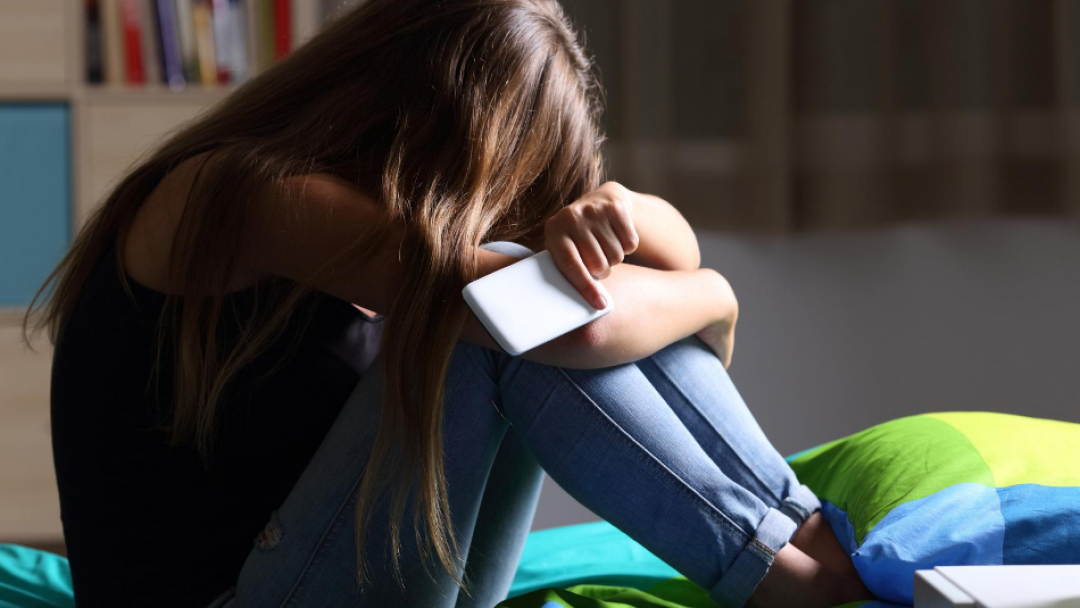
Candice Odgers teams with Common Sense, releasing new report on “Tweens, Teens, Tech & Mental Health”
Over the past few years, there has been an alarming rise in depression, anxiety, and suicide risk among tweens and teens, and many parents, academics, and health professionals believe heavy technology and social media use is the cause of this current adolescent mental health crisis.
 Enter the global pandemic of 2020, when literally overnight, schools, peer networks, workplaces, and communities were pushed entirely online and societal structures and stability were unmoored. Parents, educators, and adolescents themselves now face unprecedented instability and uncertainty, a recipe for toxic stress, trauma, and anxiety.
Enter the global pandemic of 2020, when literally overnight, schools, peer networks, workplaces, and communities were pushed entirely online and societal structures and stability were unmoored. Parents, educators, and adolescents themselves now face unprecedented instability and uncertainty, a recipe for toxic stress, trauma, and anxiety.
To understand how we can best support adolescents and develop guardrails for the future, Common Sense has released “Tweens, Teens, Tech & Mental Health,” a report co-authored by Candice L. Odgers, professor of psychological science, that synthesizes what is known about adolescents' mental health and its associations with digital technology use. Importantly, the report provides guidance to identify those who may be most vulnerable, signal when parents should be concerned, and outline what stakeholders can do to help. Common Sense is a nonprofit advocacy group focused on digital access and safety for children and families.
Odgers and her co-author Michael Robb, of Common Sense, include commentary from leading advocates, educators, and healthcare practitioners and their report’s key findings include:
- Girls and adolescents of color are most vulnerable for mental health problems. Suicides had been increasing among every age group in the United States but rose most steeply among 10- to 14-year-old girls, with a rate that tripled between 1999 and 2017. Adolescents of color are especially vulnerable: 12.5% of Black and 10.5% of Latinx adolescent girls in grades 9–12 reported having attempted suicide at least once in the past 12 months, as compared to 7.3% of White females and 9.8% of Black, 8.2% of Latino, and 6.1% of White male adolescents.
- Social media use is related to worse mental health more frequently among adolescent girls, but it's not clear whether social media use is a cause of worse mental health, a symptom of it, or both. Recent research shows that (for girls only) early mental health symptoms predict later social media use patterns, but that social media use does not predict later mental health symptoms.
- The claim that screen time and social media use is a cause of mental health outcomes is uncertain, and identified associations are small , accounting for less than 1% of the differences between adolescents, and offer no way to separate cause from effect. This is because mental health disorders emerge from a complex set of social, genetic, and experiential factors, which have varying influence across development and situations.
- Offline risk often precedes and marks online risk, as young adolescents with existing mental health vulnerabilities report more negative online experiences and patterns of social media use that may be potentially more harmful. Adolescents who are especially sensitive to social evaluation, who may have "low" status offline, and/or who have a history of victimization or bullying may have unique vulnerabilities as they transition into online spaces. At the same time, some populations of adolescents who are marginalized in offline spaces, including LGBTQ teens, often report distinct benefits from supportive online communities.
- Conversations around screen time are changing as adolescents have been quickly moved online to meet all of their educational and social needs. Flipping the script on screen time to focus on how digital technology is being used versus how much has always made good sense, and time online needs to be tailored to meet basic and critical educational and social needs of adolescents.
- Digital media and technology can and should be a social safety net right now. Household socioeconomic status is one of the strongest factors shaping both adolescents' online experiences and their mental health. But as with other social safety nets, many of the most vulnerable adolescents are unable to reliably access and receive support in digital spaces.
- Unfortunately, the majority of digital mental health tools have not been designed with adolescents in mind. This is a missed opportunity, particularly during the COVID-19 crisis as digital contact becomes one of the main ways for counselors and other mental health professionals to reach adolescents.
- More longitudinal research is needed to understand the impact of tech on kids’ mental health. Investment in research is critical to support adolescent development and inform product development. Common Sense supports the landmark bipartisan Children and Media Research Act in Congress that would provide funding for the NIH to support this critical research.
"Tweens, Teens, Tech & Mental Health provides readers with an objective understanding of the complex challenges that adolescents are facing, and presents a roadmap for recovery from leading child advocates," said James P. Steyer, founder and CEO of Common Sense.
"Tech and policymakers must come together to regulate and build a digital ecosystem that works for all kids, instead of one that sabotages their well-being and exploits their vulnerabilities for profit."
In conjunction with this report, Common Sense will convene leading advocates, tech executives, and policymakers in a series of virtual events and actions in support of kids' well-being, including a push to close the digital divide, supporting more research at the state and federal level, and ensuring all kids and families have access to technology-enabled support services.
To learn more, access the full report, or participate in these efforts, visit commonsense.org.
As part of the report’s release, Odgers took part in this presentation:
Related